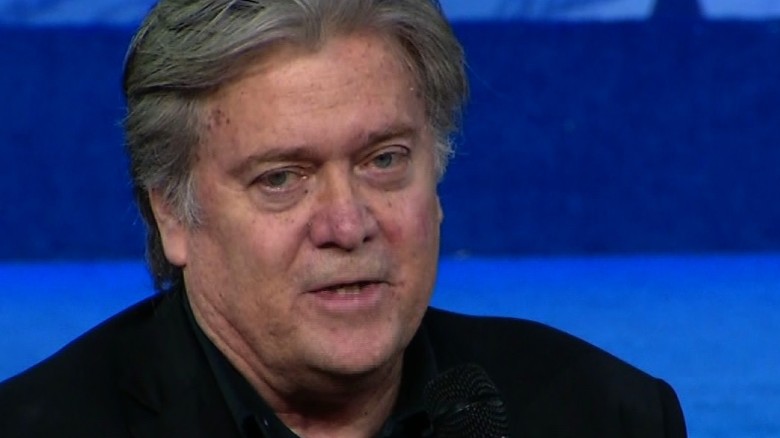President Trump’s decision to remove chief strategist Steve Bannon from the National Security Council’s principals committee suggests a potentially significant change in the power balance among the four top White House advisers.
Bannon’s placement on the principals committee at the start of the Trump administration drew criticism not only from Democrats but also from many Republicans and prominent members of the intelligence community. The idea that Bannon, who, prior to his hiring as the chief political strategist to Trump’s campaign, had been the CEO of a conservative news website, would sit on a committee typically reserved only for the upper echelon of the military, raised questions about the scope of his influence within the White House.
It was part of a broader ascension of Bannon within the West Wing; he was widely regarded in the early days of the administration as a first among equals in a group that included chief of staff Reince Priebus, counselor Kellyanne Conway and son-in-law Jared Kushner.
That ascension has clearly faltered. The removal of Bannon from the NSC comes in the wake of a series of other moves — most notably the arrival of Trump’s daughter, Ivanka, in the West Wing — that suggest that the president is moving away (at least for the moment) from the more hard-line ideological bent of Bannon.
“I always believed Steve would be first senior adviser to leave the White House,” said one former Trump aide granted anonymity to speak candidly. “He’s an ideologue. Trump is not. He has to get frustrated.”
The Trump White House sought to spin the Bannon decision not as a demotion but rather a natural conclusion to his initial appointment to the principals committee. But, that doesn’t really check out. If Bannon’s position on the NSC was always meant to be temporary why not say that from the outset?
It’s hard not to see the Bannon move in the broader context of Trump’s first 75 days in office, which have been, to put it mildly, chaotic. The attempt to overhaul the Affordable Care Act ended before it ever started, an 18-day debacle that showed that Trump’s challenges within his own party were far larger than he seemed to believe. He continues to labor under a self-inflicted controversy regarding his unproven allegation that President Obama wiretapped him during the 2016 campaign. The numerous ties between senior campaign aides and Russian intelligence officials — as well as the ongoing Justice Department investigation into these ties — show no signs of being knocked off front pages.
All of it has created a toxic political environment for Trump. His approval rating in Gallup’s daily tracking poll is mired in the mid 30s; it’s at 37% in the three-day rolling average today. That marks a historic low for a president so new to the office. The lowest approval number Gallup measured for Obama in his first year was 49% in November 2009. For George W. Bush it was 51% in September 2001.
While Trump — like all politicians — is loathe to admit a change of direction is needed or that mistakes have been made, it’s hard to look at his current position and conclude anything else.
To be clear: Bannon will remain in the White House — and in a senior role. But the diminution of his power — and in such a public way — is a clear sign that a shakeup in the Trump power structure is under way.
Trump, of course, is mercurial. Bannon may have fallen out of favor — for now. But, almost nothing is set in stone in the world of Donald Trump so in a month or two we could be talking about Bannon’s reassertion of primacy in the Trump orbit. But, that’s not the story today.




